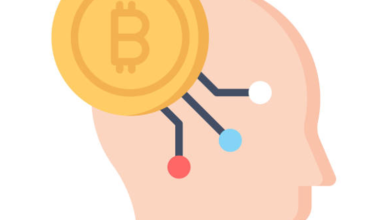Top Mobile App Development Trends for 2024

The world of mobile app development is constantly evolving, driven by advancements in technology and changing user expectations. As we move into 2024, it’s crucial for developers, businesses, and tech enthusiasts to stay ahead of the curve by understanding the key trends that will shape the future of mobile apps. From artificial intelligence to 5G, the trends outlined below represent the most significant shifts that will influence how apps are developed, deployed, and used in the coming year.
The Rise of Artificial Intelligence in Mobile Apps
Artificial Intelligence (AI) is no longer a futuristic concept—it’s a critical component of modern mobile apps. In 2024, AI integration is set to become even more sophisticated, enabling apps to deliver personalized experiences, predictive analytics, and enhanced user engagement.
AI-Driven Personalization
One of the most significant benefits of AI in mobile apps is its ability to offer highly personalized experiences. By analyzing user data, AI can predict preferences, recommend content, and tailor the app’s interface to individual users. For instance, AI-powered music streaming apps can suggest playlists based on the user’s listening history, while e-commerce apps can recommend products that align with the user’s shopping habits.
Natural Language Processing (NLP) and Voice Assistants
NLP technology is making it easier for apps to understand and respond to human language. This advancement is driving the rise of voice assistants within mobile apps, allowing users to interact with apps through voice commands. In 2024, expect to see more apps integrating voice search and command features, making them more accessible and user-friendly.
AI-Powered Security Enhancements
AI is also playing a crucial role in enhancing mobile app security. With the increasing threat of cyberattacks, AI-driven security solutions can detect and respond to threats in real-time. These solutions analyze patterns and behaviors to identify potential vulnerabilities, offering a proactive approach to app security.
5G Technology: Transforming Mobile App Experiences
The rollout of 5G technology is set to revolutionize mobile app development in 2024. With faster download and upload speeds, lower latency, and improved connectivity, 5G will unlock new possibilities for app developers.
Enhanced Streaming and Real-Time Interactions
5G’s high-speed connectivity will significantly enhance streaming services, enabling apps to deliver higher quality video and audio content with minimal buffering. Real-time interactions, such as live gaming and video conferencing, will also see vast improvements, providing users with smoother and more responsive experiences.
IoT and Smart Devices Integration
The Internet of Things (IoT) is expanding rapidly, and 5G will further accelerate this growth by enabling more efficient communication between smart devices. Mobile apps will play a crucial role in managing and controlling these IoT devices, from smart home systems to connected cars. As a result, we can expect to see a surge in apps designed to integrate seamlessly with various IoT devices, offering users greater convenience and control.
Augmented Reality (AR) and Virtual Reality (VR) Advancements
AR and VR technologies have been around for some time, but 5G will take these experiences to the next level. With the increased bandwidth and reduced latency of 5G, AR and VR apps will become more immersive and interactive. In 2024, we can expect to see a rise in mobile apps that utilize AR for enhanced shopping experiences, virtual tours, and interactive gaming.
Progressive Web Apps (PWAs): The Future of Mobile Web
Progressive Web Apps (PWAs) are gaining traction as a viable alternative to native mobile apps. PWAs combine the best of both web and mobile apps, offering users a seamless experience without the need for app store downloads.
Cross-Platform Compatibility
One of the primary advantages of PWAs is their cross-platform compatibility. PWAs are accessible via a web browser, making them usable across different devices and operating systems. This flexibility is particularly beneficial for businesses looking to reach a wider audience without investing in separate apps for iOS and Android.
Offline Functionality
PWAs are designed to work offline or in areas with poor connectivity, making them highly reliable for users on the go. This offline functionality is achieved through the use of service workers, which cache data and enable the app to function even when the user is not connected to the internet.
Cost-Effectiveness and Ease of Development
For developers, PWAs offer a cost-effective solution that requires less time and resources to build compared to traditional native apps. With a single codebase, developers can create an app that works seamlessly across multiple platforms, reducing the overall development time and cost.
The Growing Importance of Privacy and Security
As mobile apps become more integrated into our daily lives, concerns about privacy and security continue to rise. In 2024, app developers will need to prioritize user data protection and comply with stricter regulations.
Data Encryption and Secure Authentication
To address privacy concerns, more apps will incorporate advanced data encryption techniques to protect sensitive user information. Secure authentication methods, such as biometric authentication (fingerprint and facial recognition), will also become more prevalent, offering users a safer and more convenient way to access their apps.
Compliance with Global Privacy Regulations
With the introduction of new privacy regulations, such as the General Data Protection Regulation (GDPR) in Europe and the California Consumer Privacy Act (CCPA) in the United States, developers must ensure that their apps comply with these laws. This includes providing clear privacy policies, obtaining user consent for data collection, and allowing users to manage their data.
Transparent Data Practices
In addition to complying with regulations, app developers will need to adopt transparent data practices. Users are increasingly demanding to know how their data is being used and stored. In response, apps will need to offer greater transparency, providing users with easy-to-understand privacy settings and the ability to control their data.
The Evolution of Mobile Commerce (M-Commerce)
Mobile commerce, or m-commerce, continues to grow as more consumers turn to their smartphones for shopping. In 2024, the evolution of m-commerce will be driven by several key trends, including social commerce, mobile wallets, and AI-driven shopping experiences.
Social Commerce Integration
Social media platforms are becoming powerful m-commerce channels, with features that allow users to shop directly within the app. This trend, known as social commerce, will continue to gain momentum in 2024 as more brands leverage platforms like Instagram and TikTok to reach consumers. Expect to see more mobile apps integrating social commerce features, enabling users to discover and purchase products without leaving the app.
Mobile Wallets and Contactless Payments
The adoption of mobile wallets and contactless payment methods is on the rise, driven by the convenience and security they offer. In 2024, more apps will support mobile wallets like Apple Pay, Google Wallet, and Samsung Pay, allowing users to make purchases with just a tap of their phone. This trend will also extend to in-app purchases, making transactions faster and more seamless.
AI-Driven Shopping Experiences
AI will play a significant role in enhancing the m-commerce experience by providing personalized recommendations, virtual shopping assistants, and predictive analytics. These AI-driven features will help users discover products that match their preferences, streamline the shopping process, and improve overall customer satisfaction.
The Impact of Wearable Technology on Mobile Apps
Wearable technology, including smartwatches, fitness trackers, and smart glasses, is becoming increasingly popular. In 2024, mobile apps will need to adapt to the growing demand for wearable compatibility and integration.
Health and Fitness Apps
Health and fitness apps are among the most popular categories of apps that integrate with wearable technology. These apps track physical activity, monitor health metrics, and provide personalized fitness recommendations. In 2024, we can expect to see more advanced health apps that utilize wearable data to offer real-time insights and tailored wellness programs.
Seamless Integration with Wearables
As wearables become more sophisticated, mobile apps will need to offer seamless integration to provide users with a unified experience. This includes syncing data between devices, offering cross-device notifications, and enabling users to control their wearables directly from their smartphone apps.
Expansion of Wearable Ecosystems
With the expansion of wearable ecosystems, developers will have new opportunities to create apps that cater to specific use cases. For example, apps that enhance the functionality of smart glasses, such as augmented reality navigation and hands-free communication, will become more prevalent in 2024.
The Role of Blockchain in Mobile App Development
Blockchain technology is making its way into mobile app development, offering new possibilities for security, transparency, and decentralized applications (dApps).
Decentralized Applications (dApps)
Decentralized applications, or dApps, operate on blockchain networks rather than centralized servers. This decentralized approach offers enhanced security, transparency, and user control. In 2024, we can expect to see an increase in dApps across various industries, including finance, gaming, and social media.
Secure Transactions and Smart Contracts
Blockchain technology enables secure and transparent transactions through the use of smart contracts—self-executing contracts with the terms directly written into code. Mobile apps that facilitate financial transactions, such as payment apps and digital wallets, will increasingly leverage blockchain to offer users a more secure and trustworthy experience.
Enhanced Data Security and Privacy
Blockchain’s decentralized nature makes it inherently secure, as data is stored across multiple nodes rather than a single server. This makes it difficult for hackers to tamper with the data, providing an additional layer of security for mobile apps. In 2024, more apps will adopt blockchain technology to enhance data security and protect user privacy.
Cloud Computing and Mobile App Development
Cloud computing continues to play a vital role in mobile app development, offering scalable infrastructure, seamless data synchronization, and enhanced collaboration.
Scalable Infrastructure for Apps
Cloud computing provides developers with the ability to scale their apps based on demand. This flexibility is crucial for handling traffic spikes, ensuring that apps remain responsive and perform well even during peak usage times. In 2024, more mobile apps will rely on cloud infrastructure to provide a seamless user experience.
Data Synchronization Across Devices
With users often accessing apps across multiple devices, data synchronization has become essential. Cloud computing enables real-time data synchronization, allowing users to pick up where they left off, regardless of the device they’re using. This trend will continue to grow in 2024, with more apps offering cross-device data syncing to enhance user convenience.
Enhanced Collaboration and Development
Cloud-based development platforms enable teams to collaborate more effectively, regardless of their physical location. These platforms provide tools for code sharing, version control, and continuous integration, streamlining the development process. As remote work continues to be a common practice, cloud-based collaboration tools will be increasingly important in mobile app development.
The Influence of Edge Computing on Mobile Apps
Edge computing is emerging as a significant trend in mobile app development, offering faster processing and reduced latency by bringing computation closer to the data source.
Faster Data Processing and Reduced Latency
Edge computing allows data to be processed closer to where it is generated, reducing the need to send data to a central server. This results in faster data processing and reduced latency, which is particularly beneficial for apps that require real-time interactions, such as gaming and augmented reality.
Improved Performance for IoT Devices
Edge computing is also crucial for improving the performance of IoT devices. By processing data locally, edge computing reduces the load on centralized servers and enables faster communication between IoT devices and mobile apps. In 2024, we can expect to see more mobile apps leveraging edge computing to enhance the performance of connected devices.
Enhanced User Experience
With faster processing and reduced latency, edge computing contributes to a smoother and more responsive user experience. Apps that require real-time data processing, such as navigation apps and live streaming services, will particularly benefit from the integration of edge computing in 2024.
The Emergence of Low-Code and No-Code Development Platforms
Low-code and no-code development platforms are becoming increasingly popular, allowing developers to build apps with minimal coding knowledge.
Accelerated Development Process
Low-code and no-code platforms provide pre-built components and drag-and-drop interfaces, enabling developers to create apps more quickly than traditional coding methods. This accelerated development process is particularly beneficial for businesses that need to launch apps rapidly to stay competitive.
Democratization of App Development
These platforms are also democratizing app development by making it accessible to non-developers. In 2024, we can expect to see more entrepreneurs, small businesses, and non-technical users creating their own apps using low-code and no-code platforms.
Customization and Flexibility
Despite their ease of use, low-code and no-code platforms offer a high degree of customization and flexibility. Developers can add custom code and integrate third-party services, ensuring that the app meets specific business requirements. This flexibility makes low-code and no-code platforms an attractive option for a wide range of app development projects in 2024.
The Integration of AI and ML in App Testing and QA
As mobile apps become more complex, the need for efficient testing and quality assurance (QA) processes is increasing. AI and machine learning (ML) are being integrated into app testing to streamline these processes and improve app quality.
Automated Testing with AI and ML
AI and ML are being used to automate various aspects of app testing, including test case generation, bug detection, and performance analysis. Automated testing not only speeds up the QA process but also reduces the likelihood of human error. In 2024, more mobile apps will be tested using AI-driven tools, resulting in higher quality and more reliable apps.
Predictive Analytics for QA
ML algorithms can analyze historical testing data to predict potential issues and optimize the testing process. This predictive analytics capability enables developers to identify and address potential problems before they impact the user experience. As a result, we can expect to see a rise in the use of ML for QA in mobile app development in 2024.
Continuous Integration and Continuous Delivery (CI/CD)
AI and ML are also being integrated into CI/CD pipelines to automate the deployment and testing of app updates. This ensures that new features and fixes are rolled out quickly and efficiently, without compromising app quality. In 2024, more developers will adopt CI/CD practices powered by AI and ML to maintain a competitive edge.
Enhanced User Experience with Motion Design
Motion design, which involves the use of animations and transitions, is becoming increasingly important in mobile app development. In 2024, motion design will play a key role in enhancing user experience and engagement.
Smooth Transitions and Micro-Interactions
Motion design can make app interactions feel more natural and intuitive by incorporating smooth transitions and micro-interactions. These subtle animations guide users through the app, providing feedback and visual cues that enhance the overall experience. In 2024, more apps will incorporate motion design to create a more engaging and user-friendly interface.
Brand Identity and Aesthetics
Motion design is also a powerful tool for reinforcing brand identity and aesthetics. By incorporating brand colors, logos, and visual elements into animations, apps can create a cohesive and memorable experience for users. As competition in the app market intensifies, developers will increasingly use motion design to differentiate their apps and create a unique brand identity.
Enhanced Storytelling and Engagement
Motion design can also be used to tell a story and convey complex information in an engaging way. For example, onboarding animations can guide users through the app’s features, while animated tutorials can explain how to use specific functions. In 2024, we can expect to see more apps using motion design to enhance storytelling and user engagement.
The Impact of Sustainable Development Practices
As environmental concerns continue to grow, sustainable development practices are becoming increasingly important in mobile app development. In 2024, developers will need to consider the environmental impact of their apps and adopt practices that promote sustainability.
Energy-Efficient Apps
Developers are increasingly focused on creating energy-efficient apps that consume less battery power and reduce the overall carbon footprint. This includes optimizing app performance, minimizing background processes, and using energy-efficient algorithms. In 2024, energy efficiency will become a key consideration in app development, particularly for apps that run on wearable devices and other battery-powered devices.
Sustainable Hosting and Data Centers
The choice of hosting and data centers also plays a role in the environmental impact of mobile apps. More developers are opting for sustainable hosting solutions that use renewable energy and implement energy-efficient practices. In 2024, we can expect to see a rise in the adoption of green hosting and data centers as part of the mobile app development process.
Promoting Sustainable Behavior
Mobile apps can also be used to promote sustainable behavior among users. For example, apps that encourage eco-friendly habits, such as reducing energy consumption, recycling, or supporting sustainable brands, are gaining popularity. In 2024, we will likely see more apps that focus on sustainability and environmental awareness, aligning with the growing demand for eco-conscious products and services.
FAQs
What are the key trends in mobile app development for 2024?
The key trends for 2024 include AI integration, 5G technology, the rise of PWAs, enhanced privacy and security measures, the impact of wearable technology, the use of blockchain, the influence of cloud computing, and the emergence of low-code and no-code platforms.
How will 5G technology impact mobile app development?
5G technology will transform mobile app development by enabling faster data speeds, lower latency, and improved connectivity. This will enhance streaming services, real-time interactions, IoT device integration, and the development of AR and VR apps.
What role does AI play in mobile app development?
AI plays a significant role in mobile app development by driving personalization, enhancing security, and automating testing and QA processes. AI-driven features like voice assistants and predictive analytics are also becoming more prevalent in mobile apps.





